
Scottish Association for Marine Science Launches Crowdfunder to Give Gamers Science Missions
to play more widely.“I often visit schools to inspire them about practical science and engineering, showing them that they don’t need to leave Argyll for the central belt to find rewarding work in this field," said Phil. “My team started using role playing and then homemade flash cards to get students thinking about how robots could tackle different science missions. The game has changed a lot in the last year after playtesting our prototype with our local tabletop group, RookHart games. Thanks to a lot of creative thinking and collaboration, it’s evolved into a proper

Lander Lab: Chilean Ocean Lander Data Acquisition and Control System
. The integration of the two appears straightforward, and would give topside researchers direct command and control of their seafloor scout in-situ. More sensor manufacturers should make external control of their devices possible. More work is needed on hadal depth actuators, including solenoids, flash wire releases, motors, and others. Further development of pressure-compensated LiPo batteries can provide more power safely for less offsetting buoyancy. Greater integration of recovery beacons inside the upper glass sphere will result in cost, complexity and weight savings, such as the Global Ocean
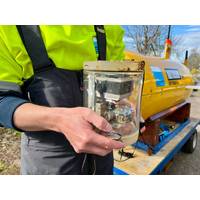
NOC: Underwater Vehicle Finds Loch Ness Monster Camera Trap
mid-1970s to investigate Loch Ness and its world-famous inhabitant, helped to identify the camera and says it was one of six deployed by Professor Mackal, with three of them lost in a gale that same year.“It was an ingenious camera trap consisting of a clockwork Instamatic camera with an inbuilt flash cube, enabling four pictures to be taken when a bait line was taken,” he said. “It is remarkable that the housing has kept the camera dry for the past 55 years, lying around 180 m deep in Loch Ness."NOC has been trialling its underwater robotics, including running multi-day, 24-hour

OPINION: Potable Water “on-the-cheap” in La Guajira, Colombia?
control measures, as established in the mining company’s Environmental Management Plan.Thus, a different, more immediate, proposal is to link the seawater of the 700 mile Caribbean coastline to inland La Guajira with desalination.The most widely used desalination processes are thermal separation-flash distillation and membrane-separation reverse osmosis. Generally speaking, these are not patented processes. Thermal separation uses heat to separate the salts. Reverse osmosis uses micro filtration and mechanical water pressure to push salt water, or salt ions, through a semipermeable membrane.Thermal

Subsea Robotics: Aquanauts, Hydronauts, Roll Out
by the hour, you do not want fewer hours. So, Schlumberger (who he’d worked with at NASA) sort of challenged me, what would you do about this? I said we need to create a hybrid vehicle. We need to be able to have an AUV turn into an ROV, because we actually don't need an umbilical. It was a flash in the pan idea, and so you know we garnered some investment.”Radford had also been working with Transocean on some drilling software and they were interested in the idea too; so they had their first investors. Since then, US government contracts, from the Navy, especially, have been a strong
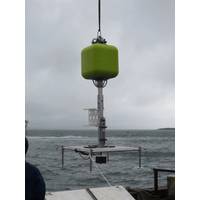
Lander Lab #4: Underwater Releases
, and in-house customized solutions. They can be sorted into functional categories: Acoustic, Timer, Magnetic, Electrolytic, Galvanic, Fusible Link, Pressure, Melt and Dissolvable.Expendable electrical release elements can be a burnwire (aka corrosive link, galvanic link) and fusible link or “flash wire”.A release can be broken down into a handful of elements.There’s the trigger that starts the release function, such as a countdown timer, acoustic command, bottom contact, or event sensor.There is the load bearing release element. This could be a burnwire, a flash wire, a rotating
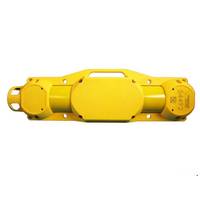
Geospace Technologies Launches Shallow Water Ocean Bottom Recorder
to fit up to 25% more nodes into a download/charge container," Geospace Technologies said.According to Geospace Technologies, Mariner has wireless connector-free charging and data download functionality. "Additional features of the Mariner include an internal heading sensor and solid-state flash memory up to 32 GB per channel. Mariner’s four-channel node uses all Geospace designed and manufactured sensor components, including three patented, high sensitivity GS-ONE geophones configured tri-axially along with an MP-18 BH hydrophone. The built-in full-resolution test generator offers
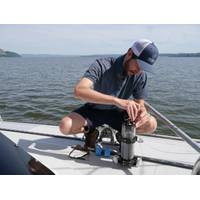
SMTP Helps to Power Future Ocean Tech
Mark Schrope.In order to offer experimental flexibility their devices span different geometries and sizes and can be fitted to any kind of fish capture equipment. Most of the devices that they produce also have a degree of programmability, in order to allow specifications such as emitted wavelength, flash-rate and intensity of light to be set by scientists. By producing tools that are simple, standardized, and flexible, Dan and his team hope to rapidly increase the understanding of how light can alter the species and size selectivity of different types of fishing bear.A New Kind of Ocean RobotTools
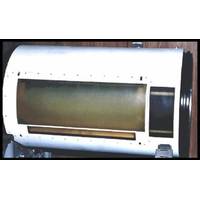
#Oi2020 History
mode can distinguish between a barrel and an automobile tire, while the low frequency mode allows the sonar to detect objects just beneath the surface of the ocean floor. The laser line scan sonar uses a laser to illuminate the target and "take a picture" in the same way that a camera uses a flash. Its narrow beam allows images to be acquired a distances three to four times that possible with conventional imaging systems. Cmdr. Whitten and 16 scientists and engineers from the Navy's Coastal Systems Station accompanying and operating the equipment when it arrives in Canada. The system



 December 2025
December 2025





